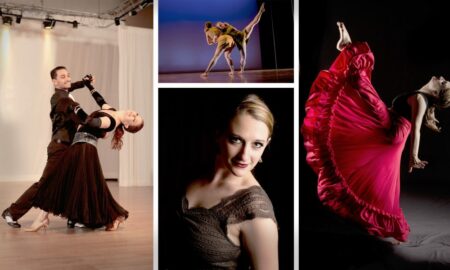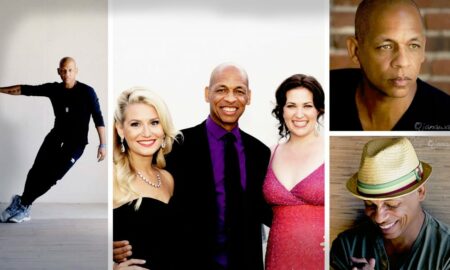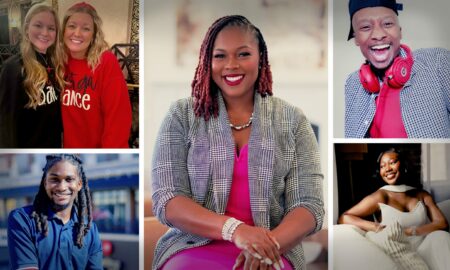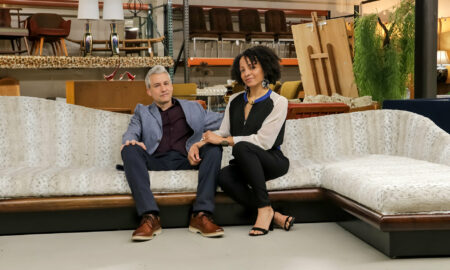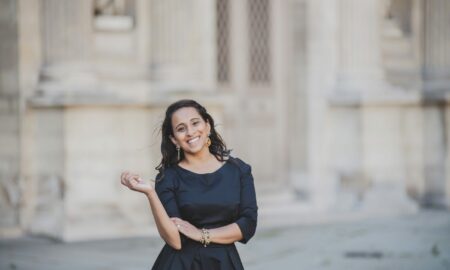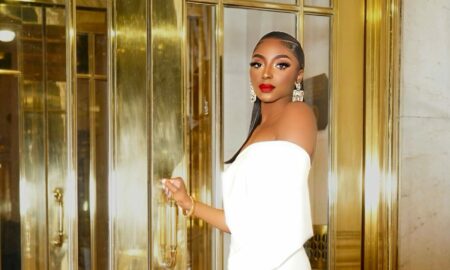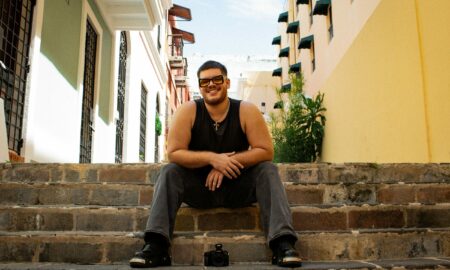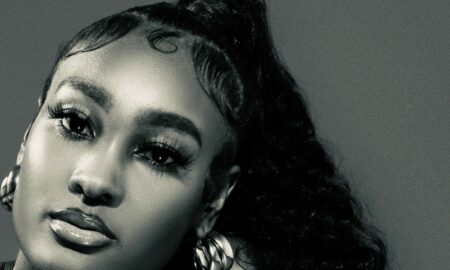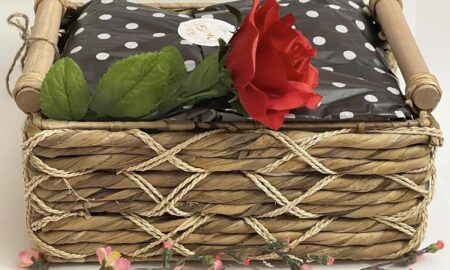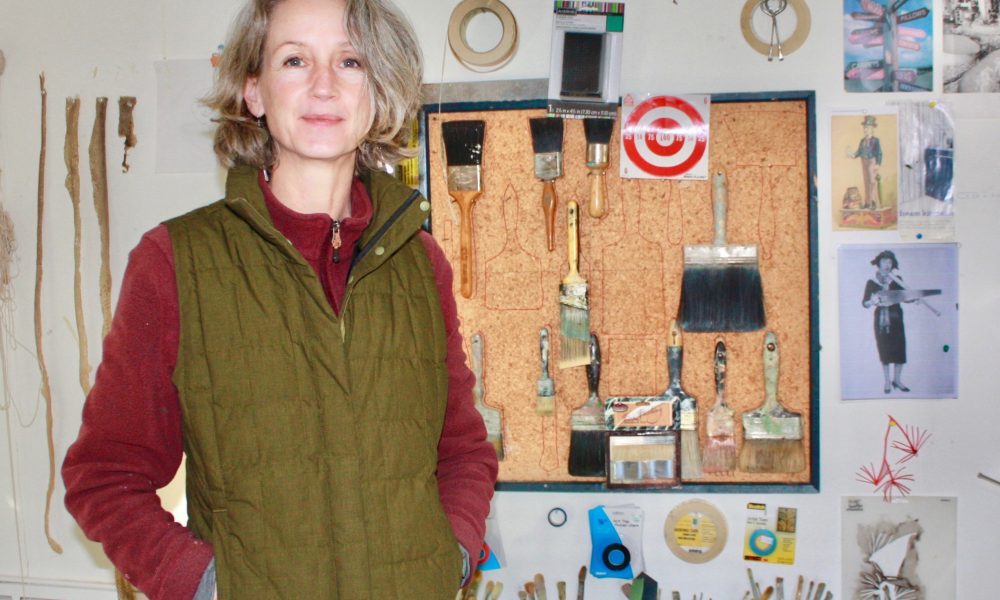

Today we’d like to introduce you to Margaret Curtis.
Margaret, please kick things off for us by telling us about yourself and your journey so far.
“In trying to heal the wound that never heals, lies the strangeness of an artist’s work.” Frederico Garcia Lorca
I remember the first time I painted. It was the early ’70s. Chattanooga was renovating its art museum and hosted a fundraiser with painting tables for the kids. I remember pushing the red paint into the green and pushing that difficult color across the paper. The action and its results made complete sense to me in a way most things at that time didn’t. Like most artists, my childhood was fraught. But the “wounds that never heal” are the generative force of my work, and I have grown to embrace them as a vital part of who I am. One thing my childhood taught me was a “radical honesty”— the ability to see past appearances, to understand power dynamics, and to stand with one foot outside of our culture, its myths and scripts.
I left Tennessee for Duke, graduated, and then immediately enrolled in the Atlanta College of Art. ACA was an incredible place in the late ’80s/early ’90s and we, students and teachers alike, thrived on good group synergy. My junior year, I was selected for the Yale at Norfolk Summer School in Connecticut. The program at that point was tough, like boot camp, and while I met important artists who pushed me and grew tremendously in my own practice as a painter, I knew I was done with further formal education.
So, I set out for New York City to paint, thinking I’d give myself five years, sink or swim. I took odd jobs to support myself, everything from faux painting brownstones in Brooklyn to teaching English at Berlitz, and spent as much time painting as possible. My big break came when Marcia Tucker, the first female curator for the Whitney and the founder of the New Museum curated me into the Bad Girls Show, a seminal show of work by younger feminist artists. From there, I was able to show regularly, and eventually landed representation with PPOW Gallery and a teaching gig at The School of Visual Arts. I renovated the upper floor of a warehouse with three other artists and had a vast live/work space on the Brooklyn waterfront. Five years turned to 15 in the blink of an eye.
In 2004, our first child was born. We left New York soon afterward for North Carolina. I live just south of Asheville with my husband and two sons.
Can you give our readers some background on your art?
I am an artist who paints. To give form to my ideas, I work with a substance that doesn’t always do what I want. The visceral, embodied voice of paint—the way its physical substance resists the imposition of subject matter while paradoxically amplifying its meaning—makes painting a collaboration of sorts. This collaboration is the most challenging, engrossing, magical, and frustrating thing imaginable.
My work has always been concerned with power, especially the power dynamics in everyday relationships. In New York, I was known for embedding a feminist critique of painting within the paint itself. Paint is a far more malleable and forgiving substance than most people assume. I squeezed it through cake decorating tools and potato ricers, spread it with flooring trowels and grout floats. I then combined the frilly, absurdly decorative surfaces with imagery that undercut or exaggerated its hyperbole. The results of this clash between the stereotypical feminine and masculine were ribald and dead-serious; dainty, bold, beautiful and grotesque.
After the birth of my son, I stopped painting for several years, and when I returned to the studio, my concerns had shifted. Motherhood had driven home the truism that the personal is political, and I wanted to use narrative more pointedly than I had before. I taught myself new visual languages and processes to convey subtle, psychological content; to explore power dynamics in their most intimate settings; to document a return to my native South and the interior of a nuclear family.
I try to keep my narratives ambiguous and open to interpretation in the hope that the work will pose more questions than answers for the viewer. I hope to create images that are hard to forget, and that are a pleasure to look at. It’s important to me that the paint feels alive, that it sings. To that end, I build imagery and specificity through the accumulation of “dumb” or crude marks. It’s an almost geological process, mark upon mark, like the layers in a canyon wall. I rarely blend out or conceal my brushstrokes, because I want the process of making the image to be obvious to the viewer, not mystifying.
Any advice for aspiring or new artists?
Nurture your relationships with other artists; they are your tribe. Learn the difference between healthy competition, which is more like an energizing kick in the pants, and negative competition, or envy. Get out into the world–out of your comfort zone. Spend time alone in nature. And keep sketchbooks. Try not to let market pressures into your studio, ever.
I wish I had learned to trust myself earlier.
What’s the best way for someone to check out your work and provide support?
I am opening a solo show at the Weizenblatt Gallery at Mars Hill University which will run from February 13th through March 15th, with an opening reception on February 27th. I will be in several group shows this spring in the Asheville area. I also have worked at Tracey Morgan Gallery, also in Asheville.
You can always find me and see what’s new at www.margaretcurtisart.com
Contact Info:
- Website: margaretcurtisart.com
- Email: margaretcurtisart@gmail.com
- Instagram: @margarcur





 Image Credit:
Image Credit:
Steve Mann
Rocky Kenworthy
Getting in touch: VoyageATL is built on recommendations from the community; it’s how we uncover hidden gems, so if you know someone who deserves recognition please let us know here.


